As Asia is the world’s largest and most populous continent, it has countless Asian veggies that are native to it and that are used in its cuisine.
We’ll take a quick look at some of them in this article, including their tastes, where they’re eaten and in what dishes.
1. Chinese Cabbage
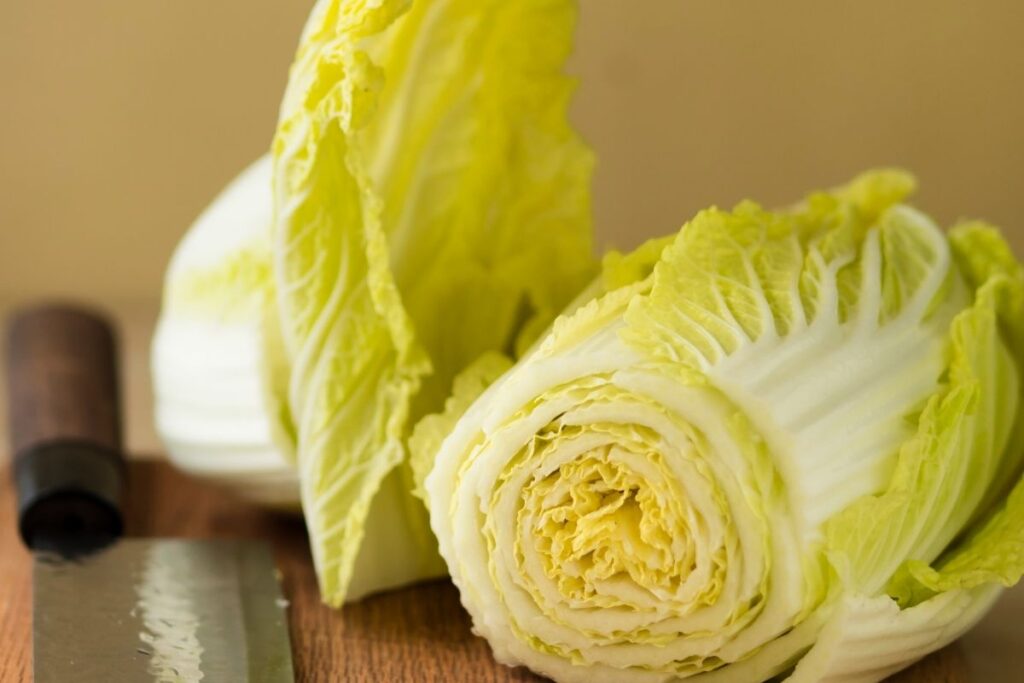
This is one of the most common vegetables in Chinese cooking. It can be cooked like any other vegetable or added raw to salads. The leaves are usually shredded into thin strips before being added to dishes.
2. Broccoli
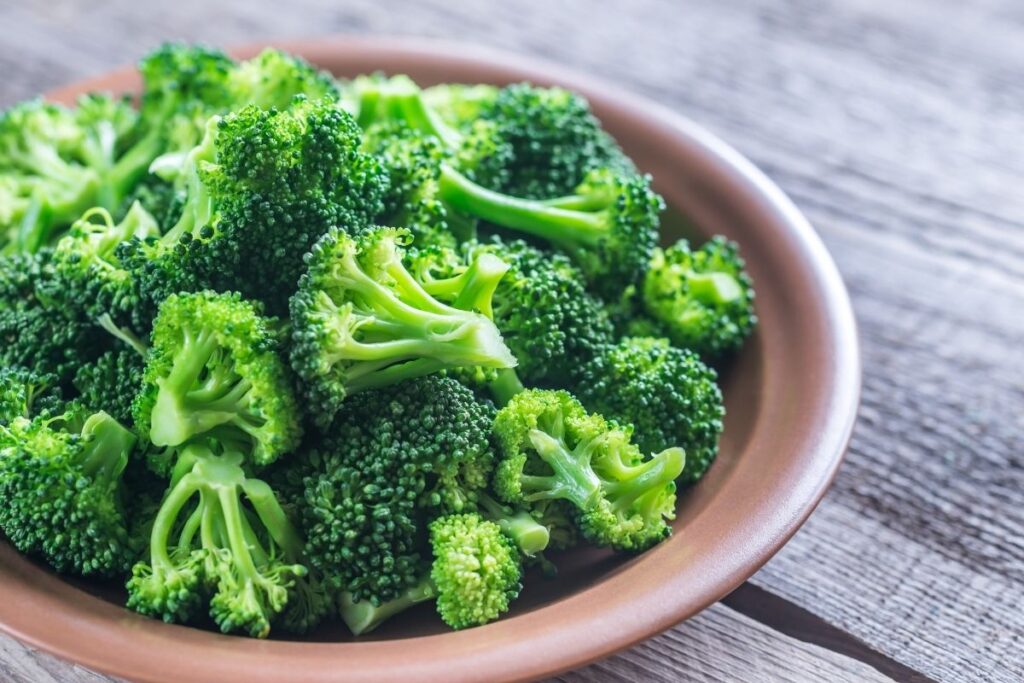
This vegetable is often used as a side dish but also as an ingredient in stir-fries and soups. The stems are sometimes cut into pieces and then sautéed with garlic.
The broccoli florets are steamed or boiled until tender. They are then tossed with sauce or seasonings. The stems are sometimes served separately from the florets.
3. Carrot
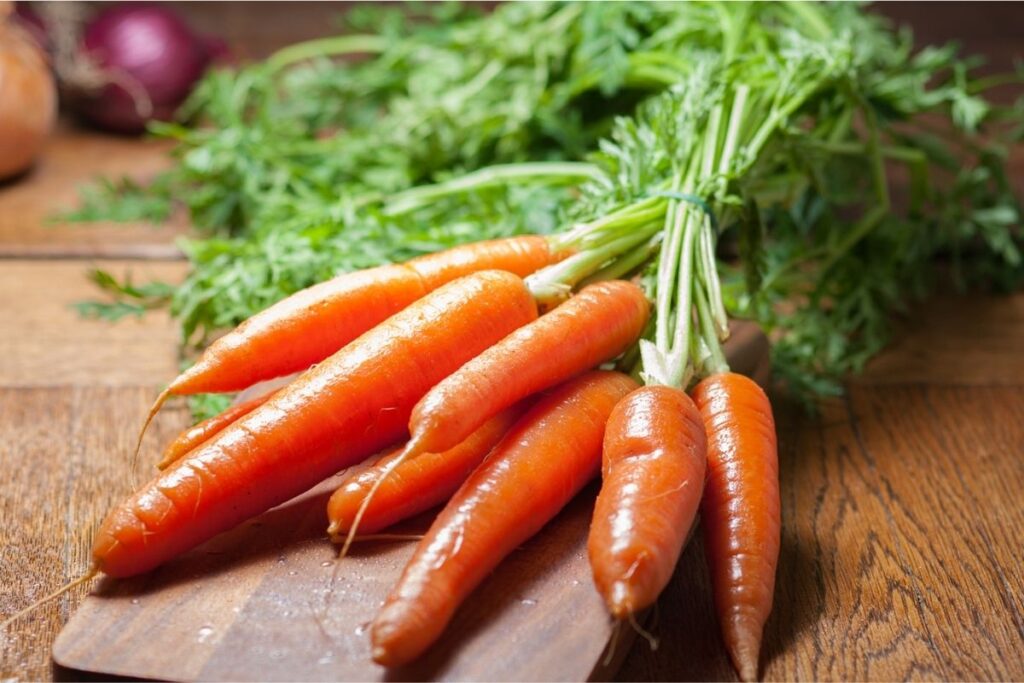
Carrots have been cultivated for thousands of years. Carrots are commonly eaten raw in cold dishes and pickled in vinegar. They are also used as ingredients in many savory dishes.
4. Bok Choy
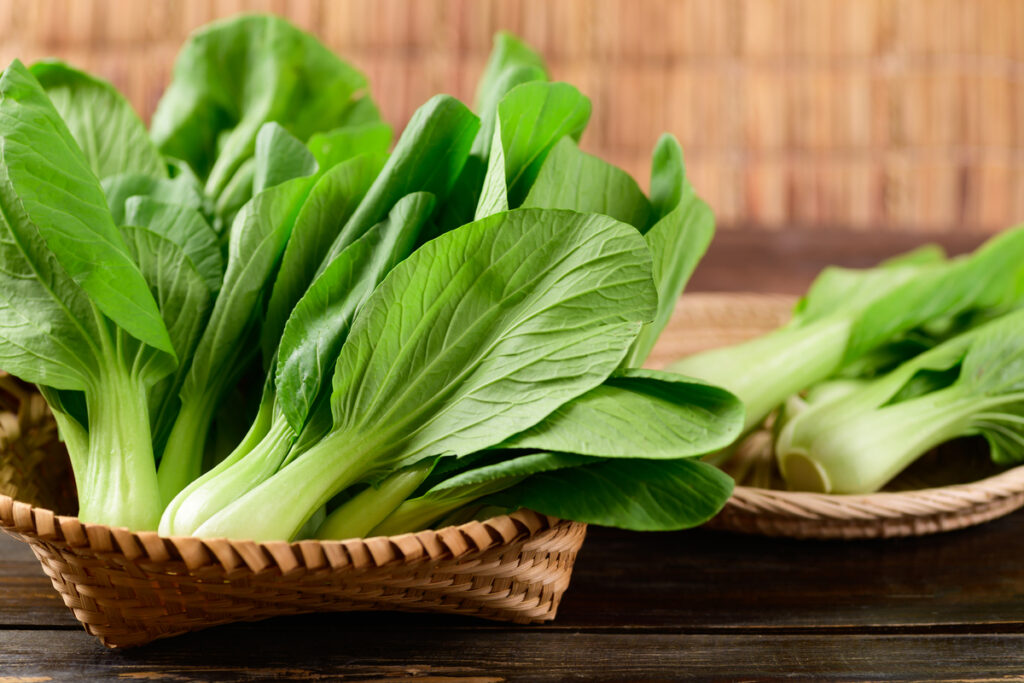
Also known as pak choi, bok choy is a member of the brassica family. This leafy green vegetable is popular in Chinese and Southeast Asian cuisines. It is frequently stir-fried with meat and seafood.
5. Daikon
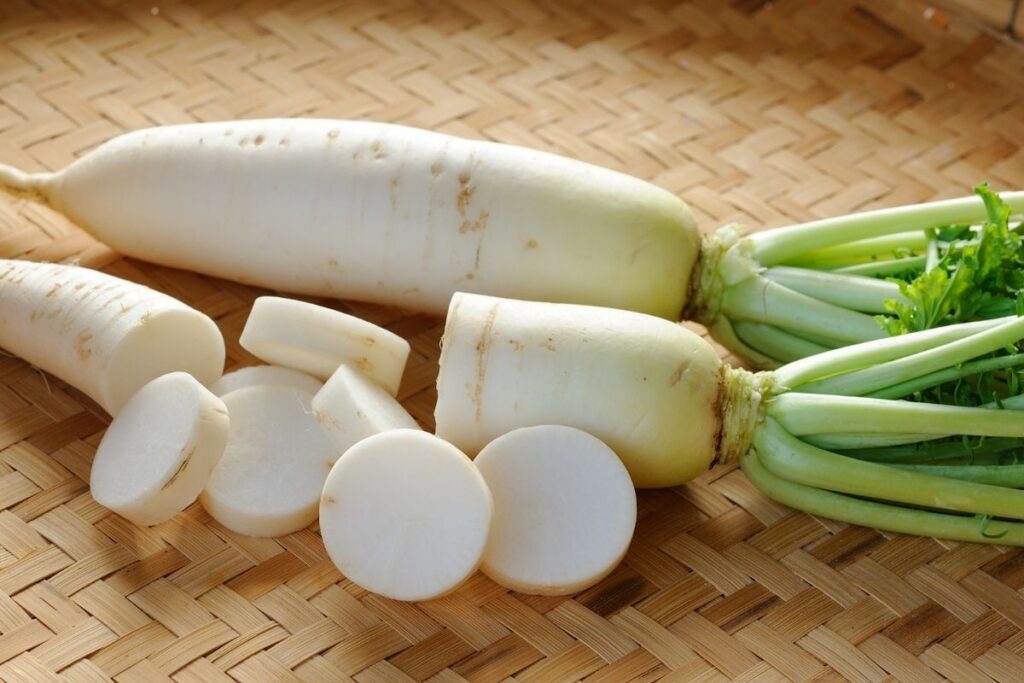
Daikon is particularly common in China, Japan, and Northern India. It’s often pickled or used to make turnip cake, as well as being an ingredient in Vietnam’s banh mi sandwiches.
6. Eggplant
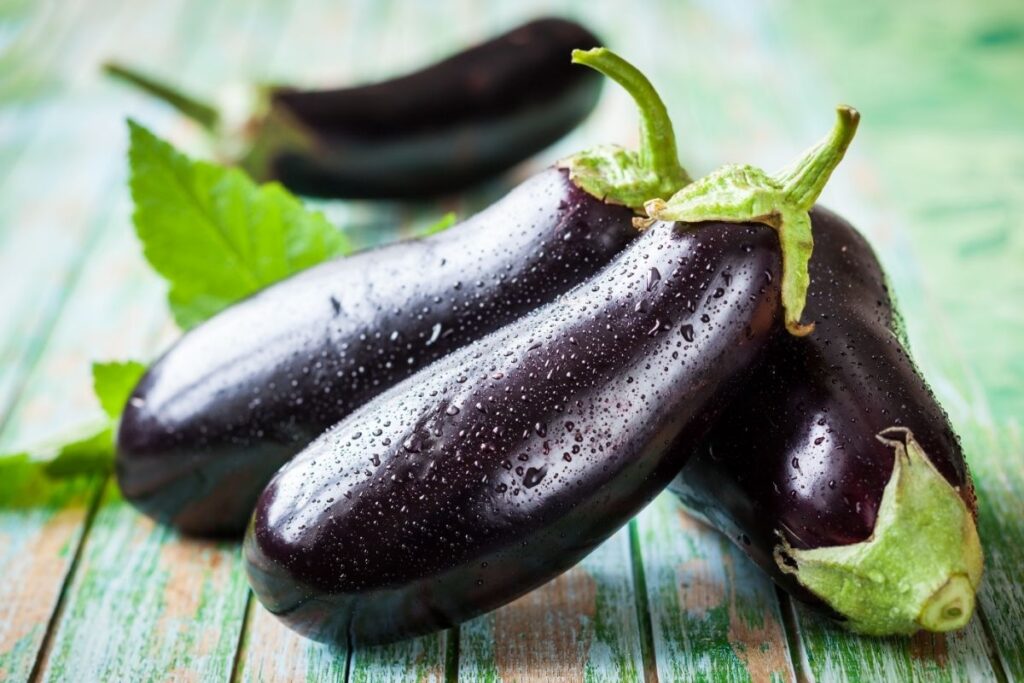
Eggplants are part of the nightshade family and are widely consumed in Asian cuisine. They are typically fried or deep-fried in East Asia and used as ingredients in curries and stews in the Indian subcontinent.
7. Gai Lan
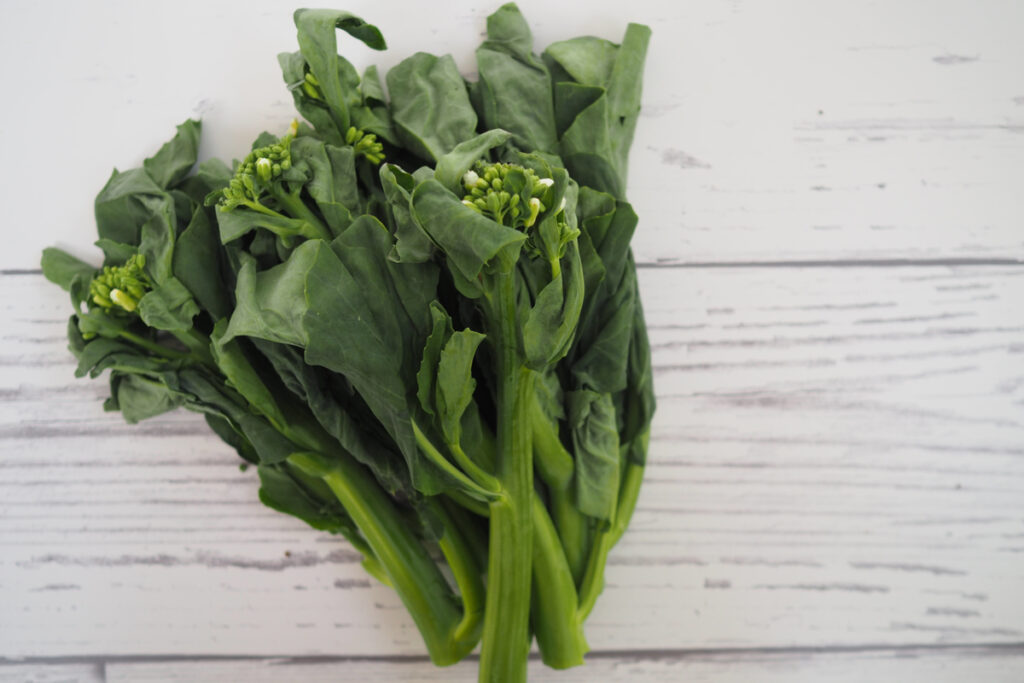
Gai Lan is also sometimes called Chinese broccoli, and is often boiled or fried and then served with garlic and/or oyster sauce. Broccolini is a cross between gai lan and broccoli.
8. Taro Root
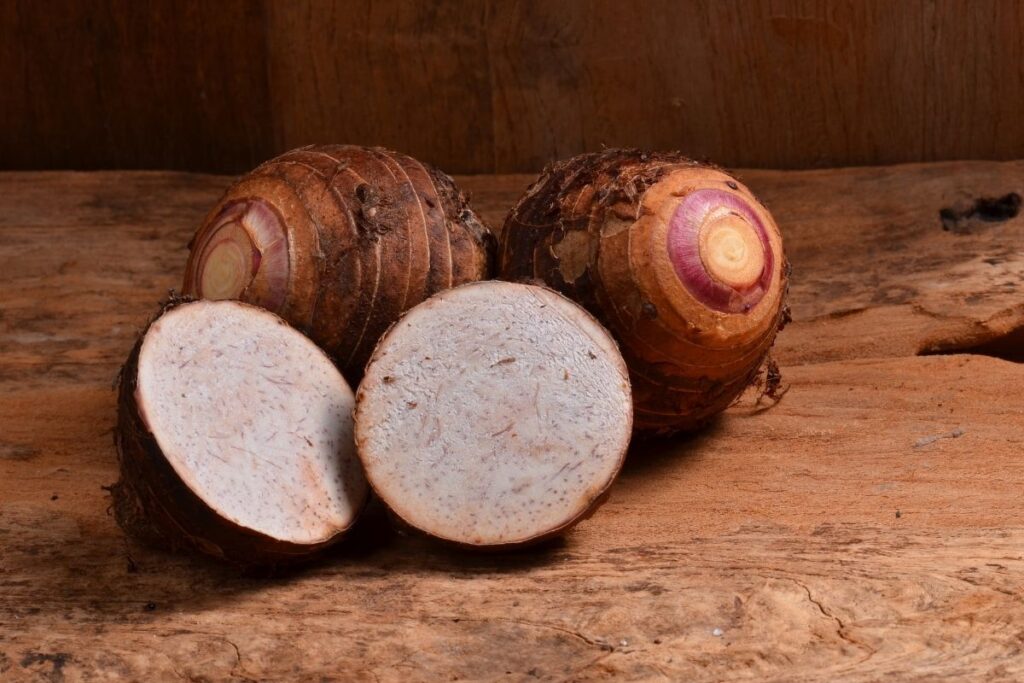
Taro root is a starchy root vegetable that’s used in both main dishes and desserts. It can be boiled, stir-fried and is sometimes also used as a staple.
9. Water Chestnut
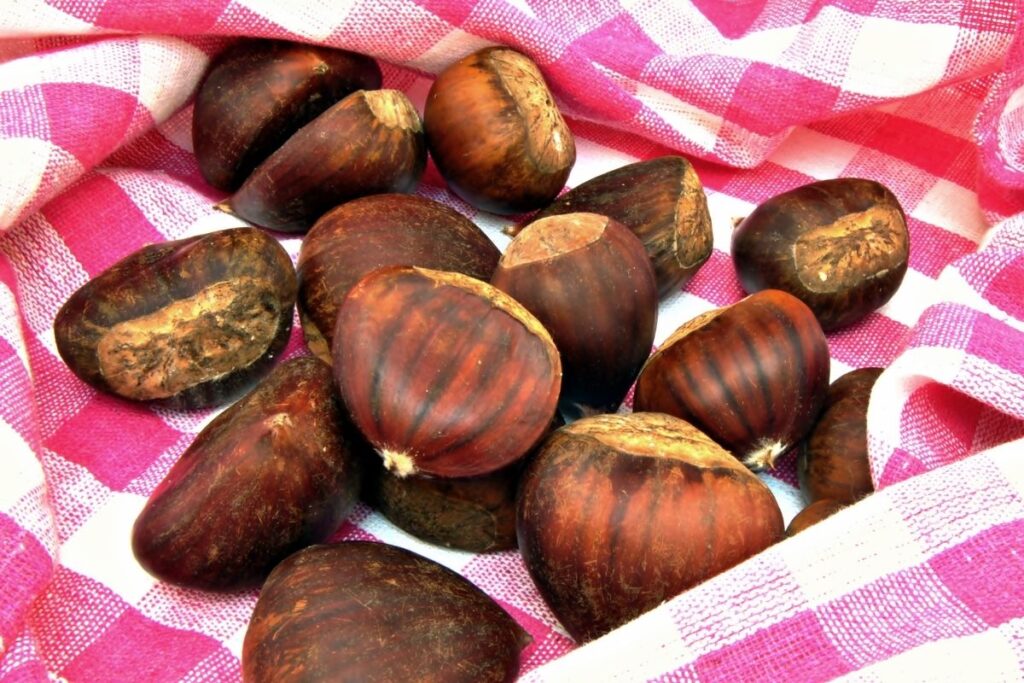
Water chestnuts are very similar to bamboo shoots but are more delicate tasting. They are paired in several dishes, including several kinds of stir-fried noodles.
10. Opo Squash
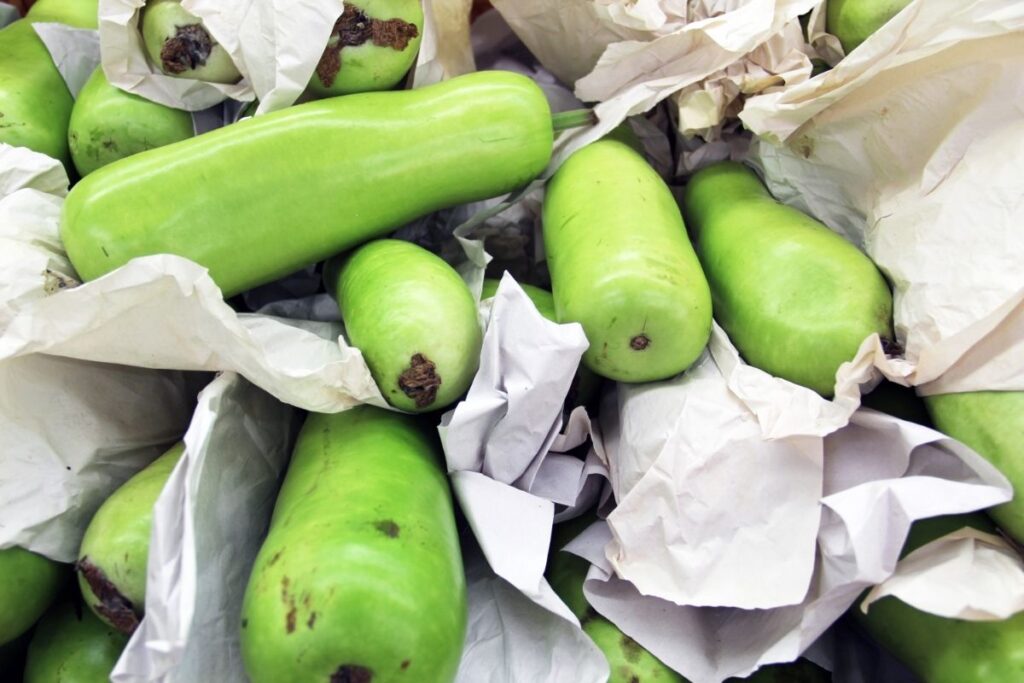
Somewhat similar to zucchini in taste, this squash is used in many soups like the Vietnamese canh bau tom.
11. Lotus Root
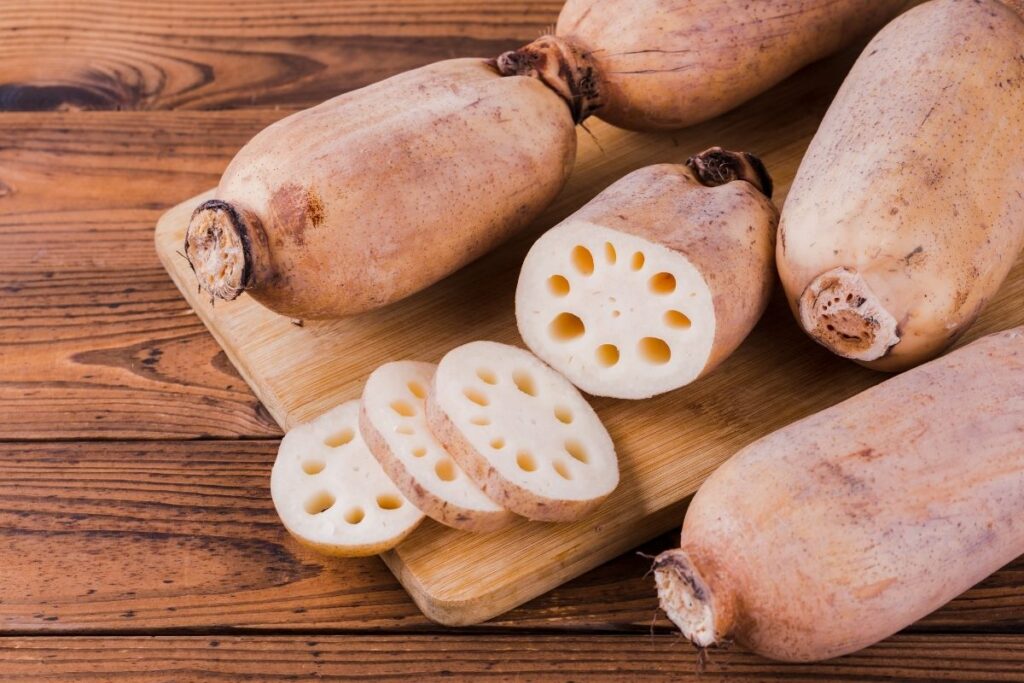
Lotus roots resemble small potatoes, but are typically seen in slices which have large holes in them. They are mashed into cakes and fried as part of various dishes.
12. Sweet Potato
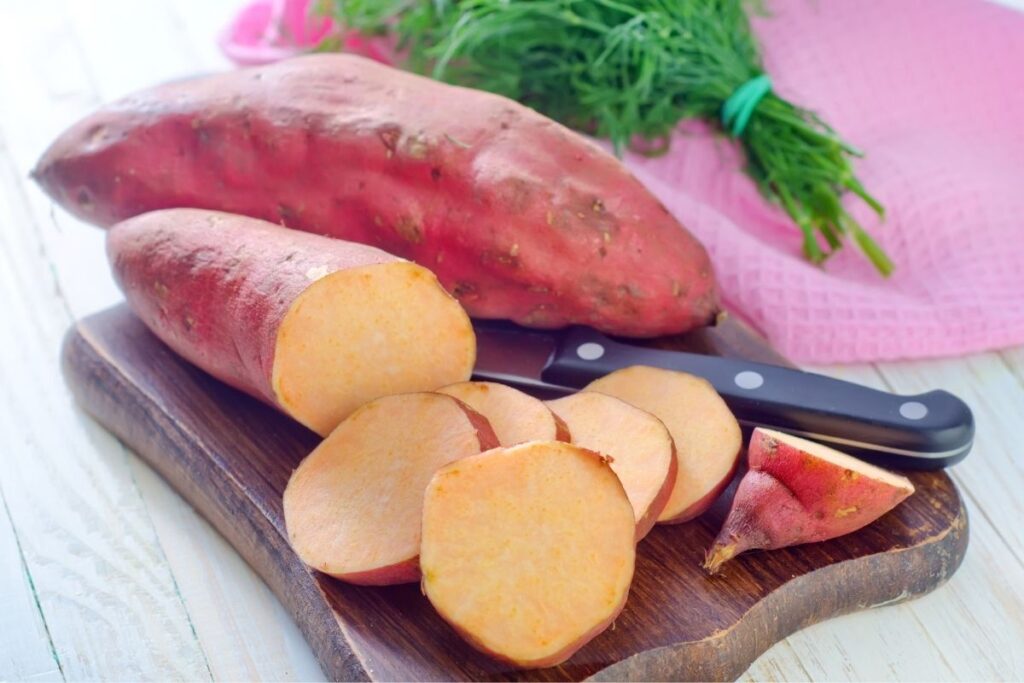
Sweet potatoes are becoming increasingly common around the world, but they’ve long been popular in Asia. In China, they’re often roasted in the wintertime.
13. Bean Sprouts
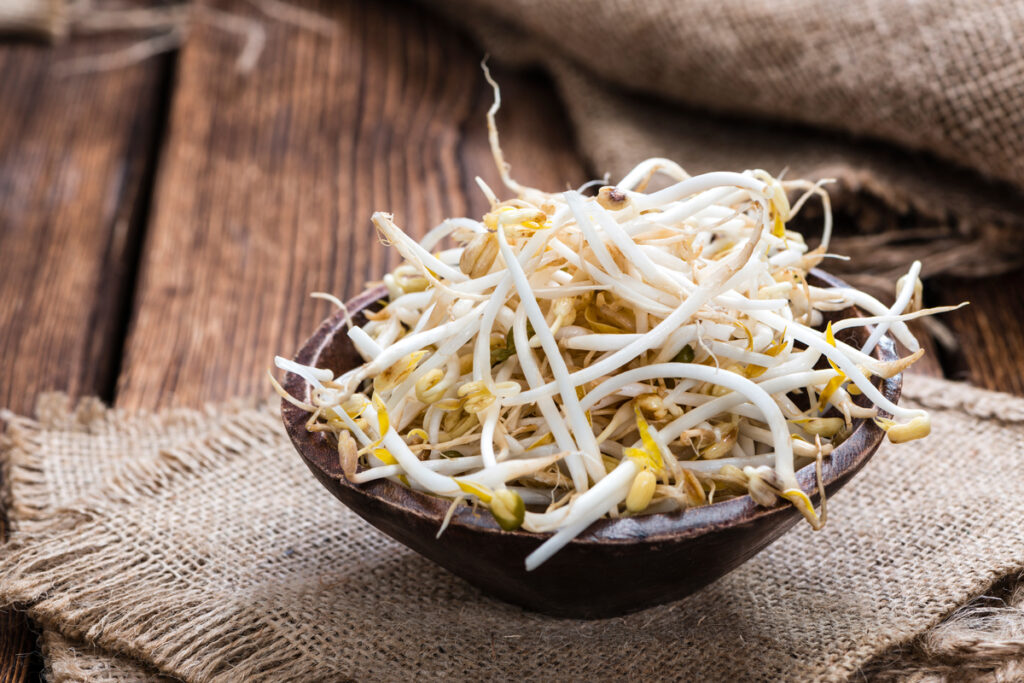
The sprouts of both soy beans and mung beans are eaten as vegetables in Asia. They’re frequently stir-fried, used in soups, and sometimes served as a side dish.
14. Lemongrass
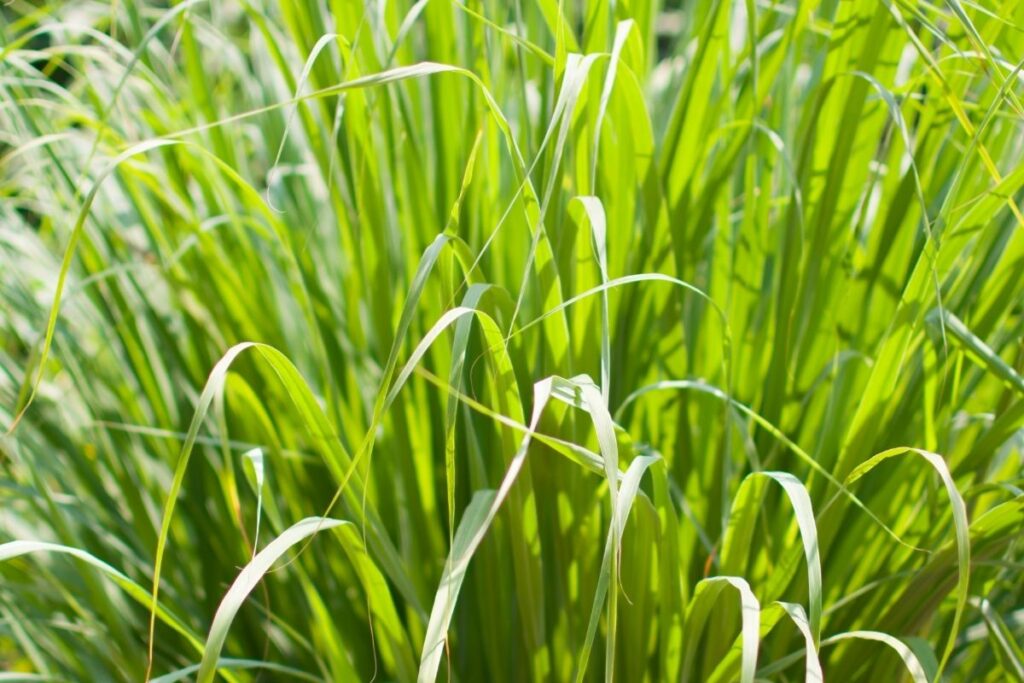
It looks like a scallion but smells like a lemon. It’s used as a flavoring in many Southeast Asian dishes like Tom Yum soup and various others
15. Bitter Melon
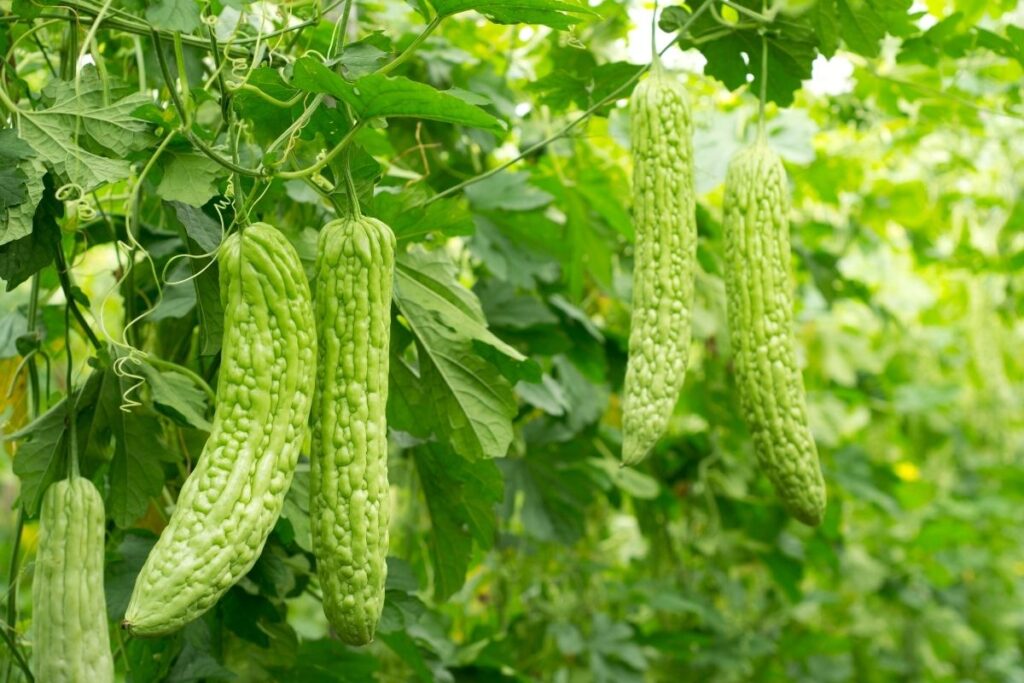
Bitter by name and bitter by nature, the bitter melon is usually cooked in soups and in the traditional Filipino dish pinakbet. It sweetens up somewhat as it ripens.
16. Shiitake Mushrooms
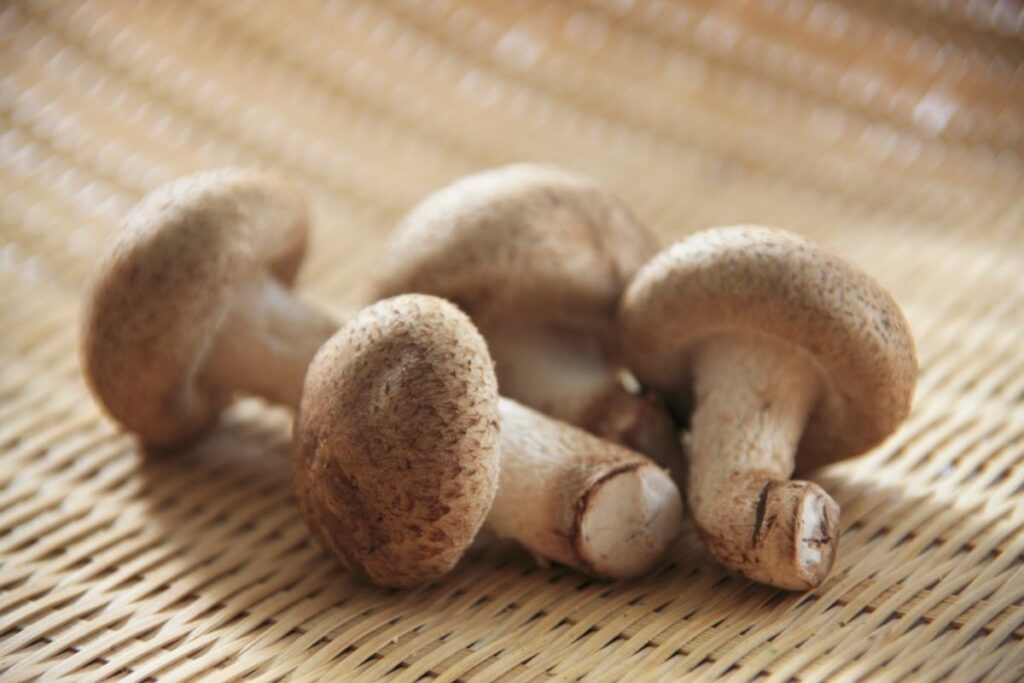
A staple of many Japanese and other Asian recipes, they’re technically not vegetables, but they’re often used as vegetables in many dishes. They’re quite dense and have a meaty flavor.
17. Snow Peas
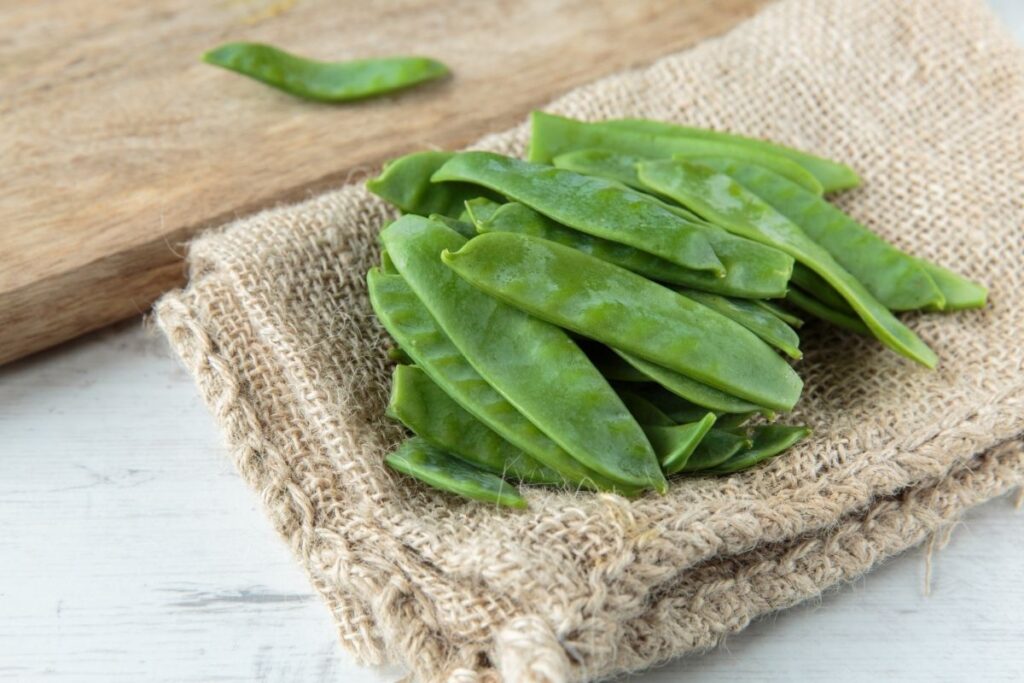
Also called sugar peas, these veggies are regularly stir-fried and added to soups of various kinds. They’re also sold in pods, so you can easily slice off the top and eat them fresh.
18. Choy Sum
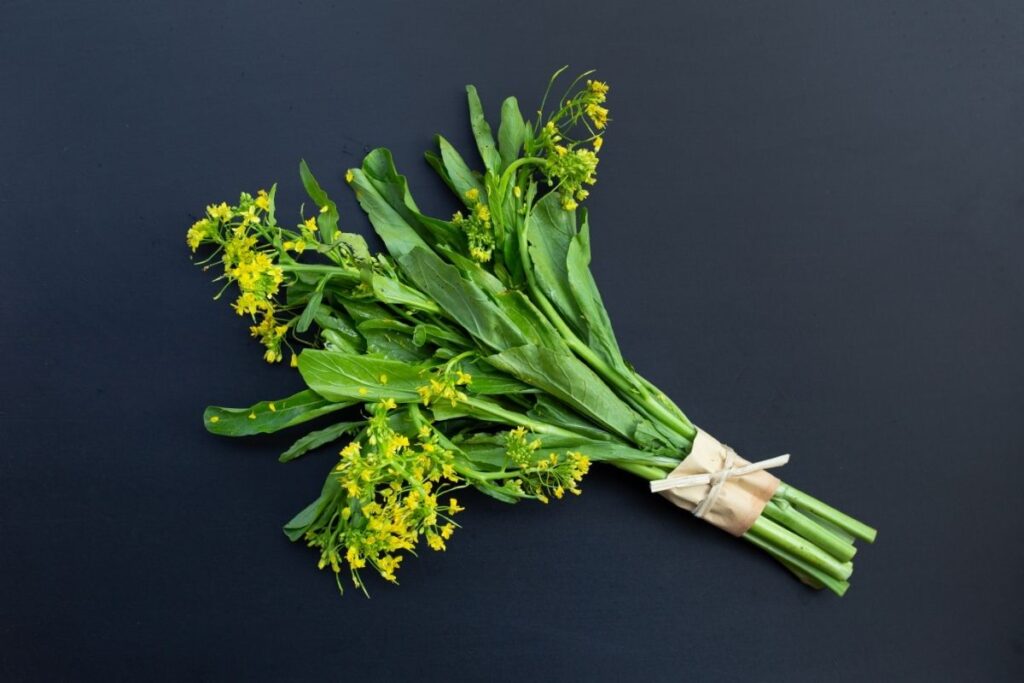
Choy sum is also known as morning glory, is quite similar to gai lan and can also be used as a substitute for things like kale and bok choy. It has a fresh, sweet taste that works well in many dishes.
19. Chinese Celery
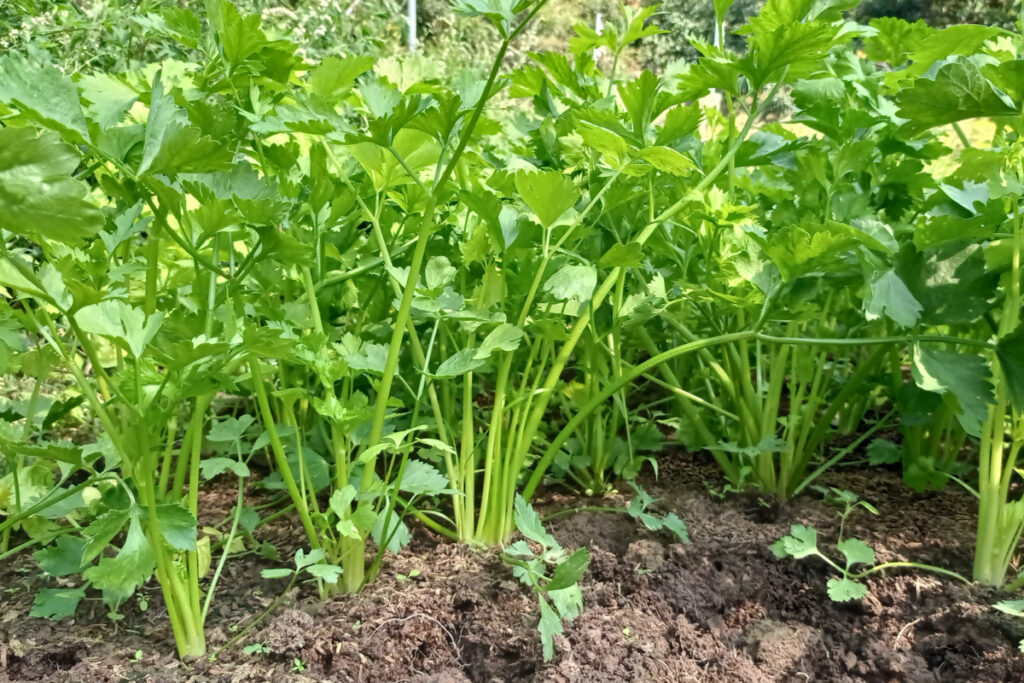
The thin, hollow stalks of this vegetable make it different from the celery you know, but the taste is quite similar, albeit stronger. It is also rarely served raw, but more often stir-fried.
20. Chinese Spinach
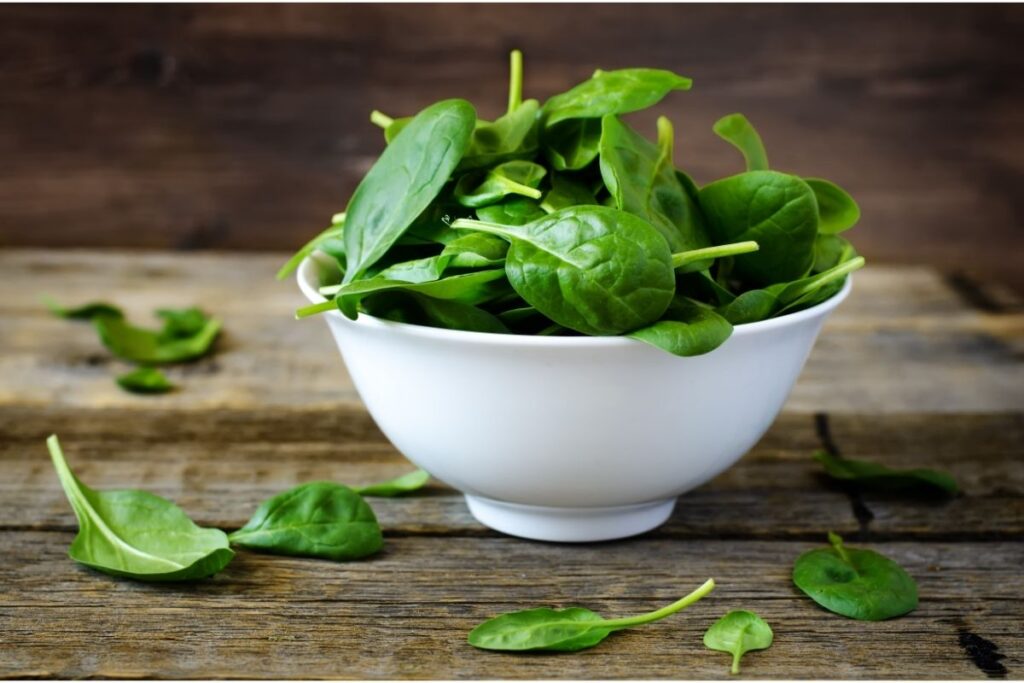
This vegetable is eaten not just in China but all over Southeast Asia too. It’s typically flavored with garlic, chilies, and ginger and in some countries is a favorite served with cuttlefish.
21. Amaranth Greens
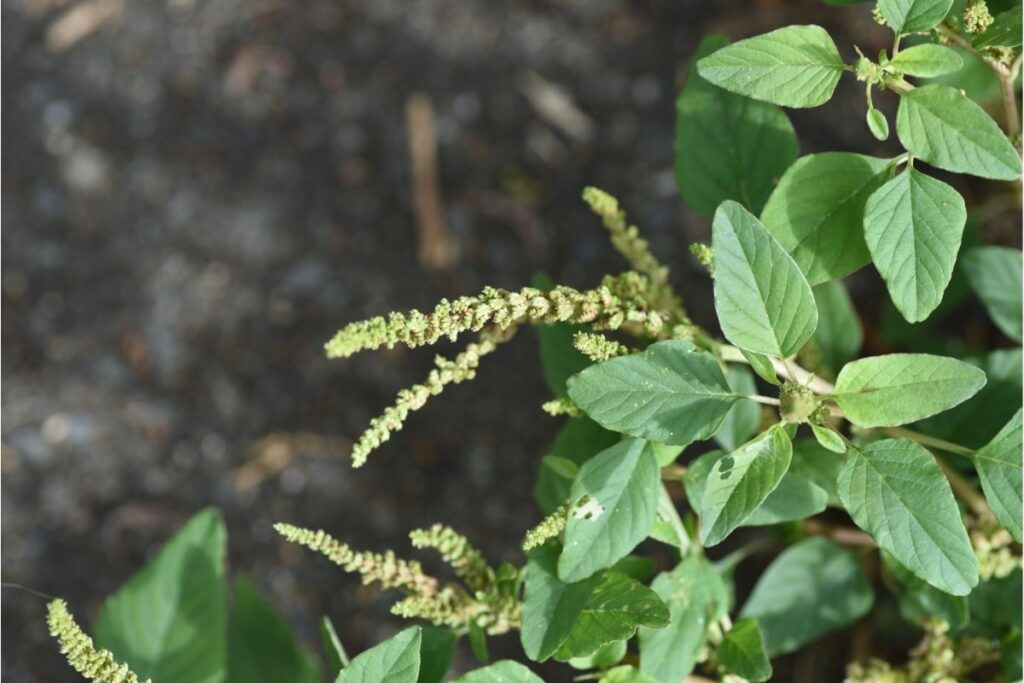
Believe it or not, amaranth greens are used as leafy vegetables in China and other Asian countries. They go in all kinds of soups and stir-fries.
22. Chinese Long Beans
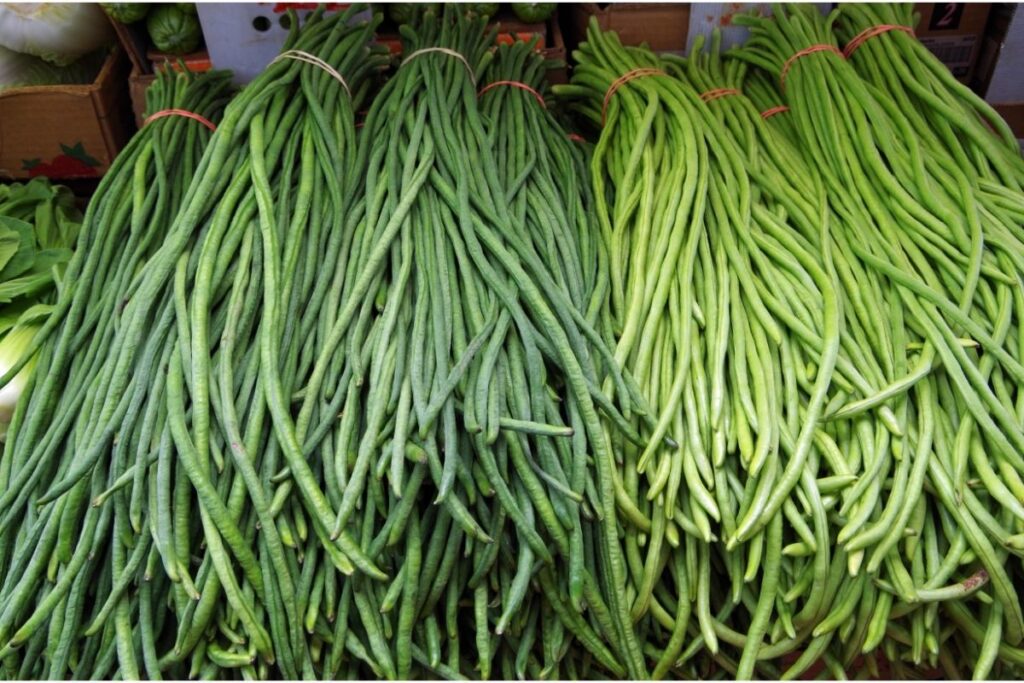
These are very similar to green beans but are much longer. For that reason, they’re frequently cut up before being cooked. For instance, you might see them stir-fried with pork.
23. Kabocha Pumpkin
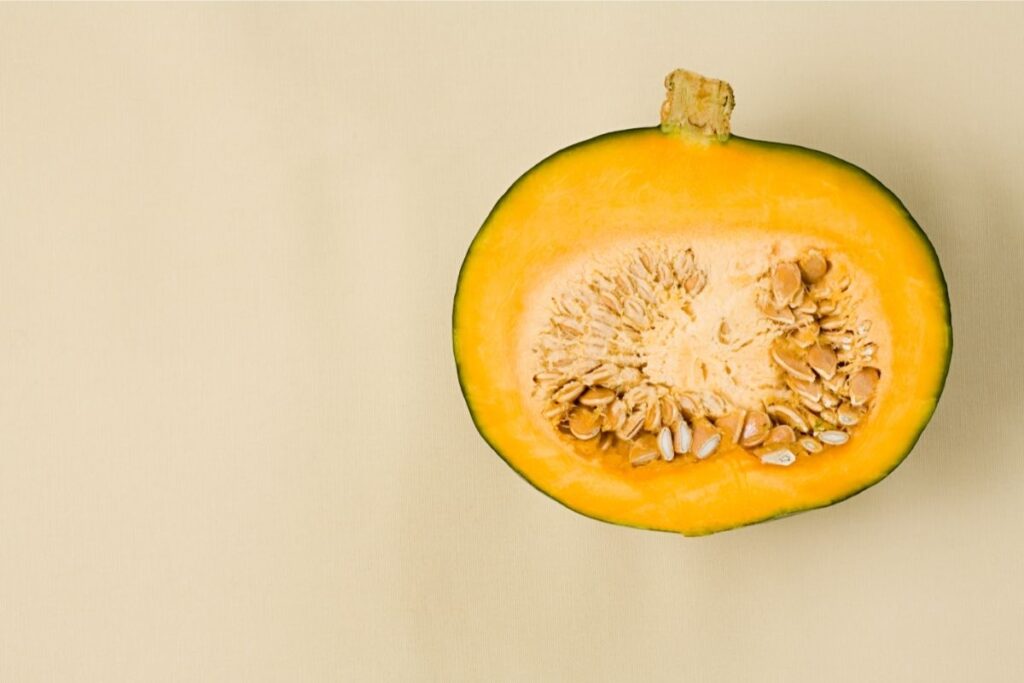
The kabocha pumpkin is also known as the Japanese pumpkin, although the outside looks very different to the bright orange pumpkins you might know. It’s frequently deep-fried or cooked as tempura in Japan.
24. Oyster Mushroom
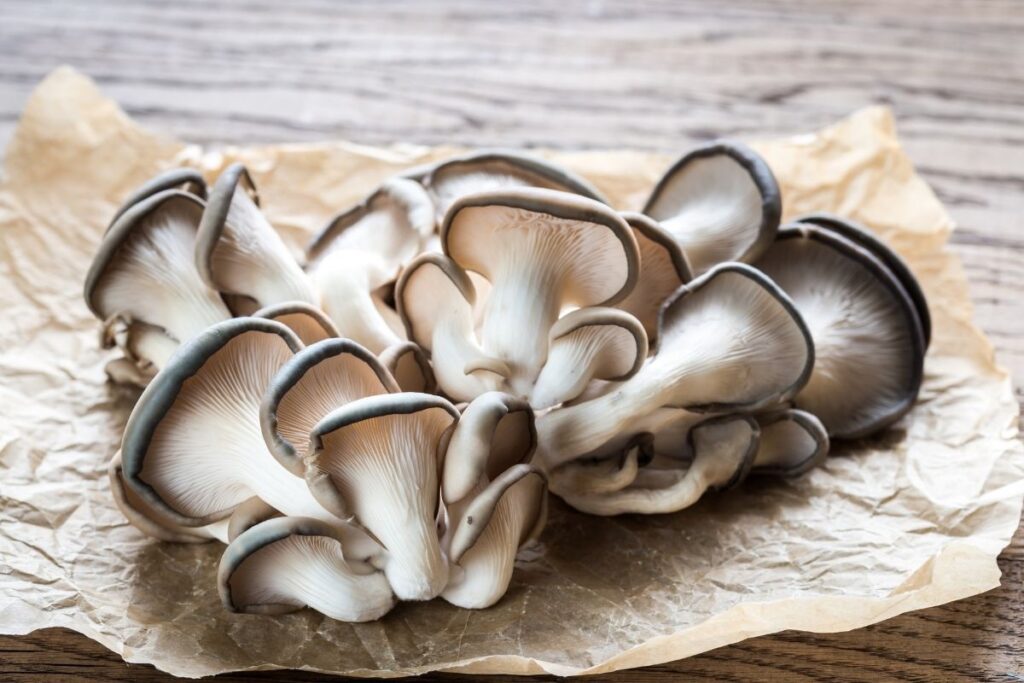
Like the shiitake, these are of course not technically vegetables, but whatever. They’re very common in various Asian cuisines and are great at absorbing flavor in stir-fries, stews, and soups.
RELATED: Morel Mushrooms: Key Steps in Growing These Rare and Delicious Mushrooms
25. Thai Eggplant
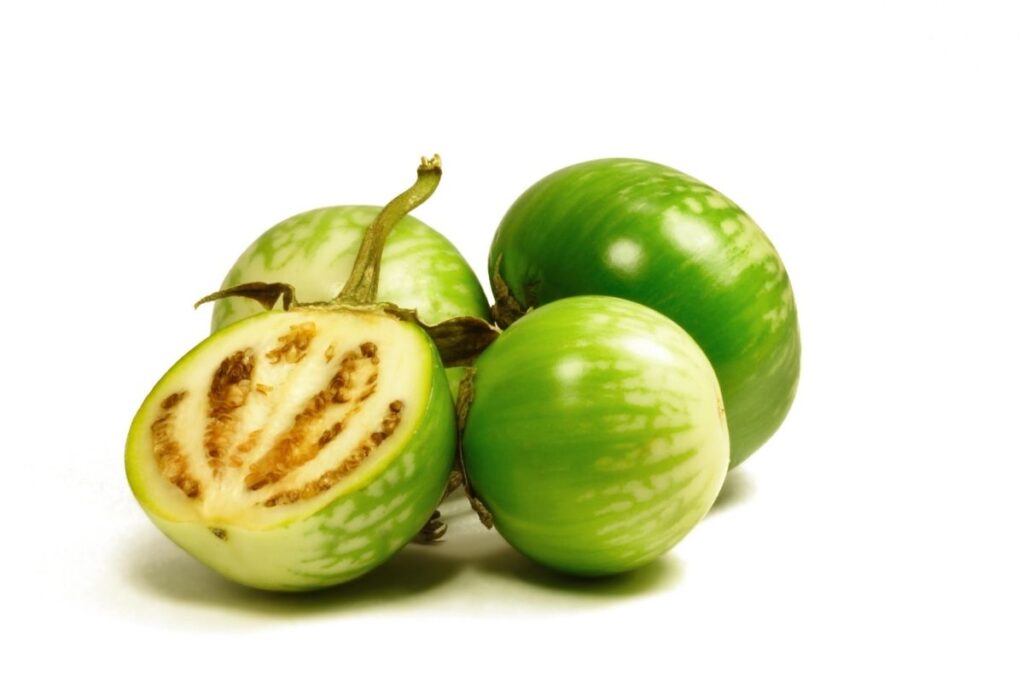
These eggplants look very different to the ones you might know – they’re green, round, and about the size of a golf ball. They’re often found in Thai curries and salads.
26. Bamboo Shoots
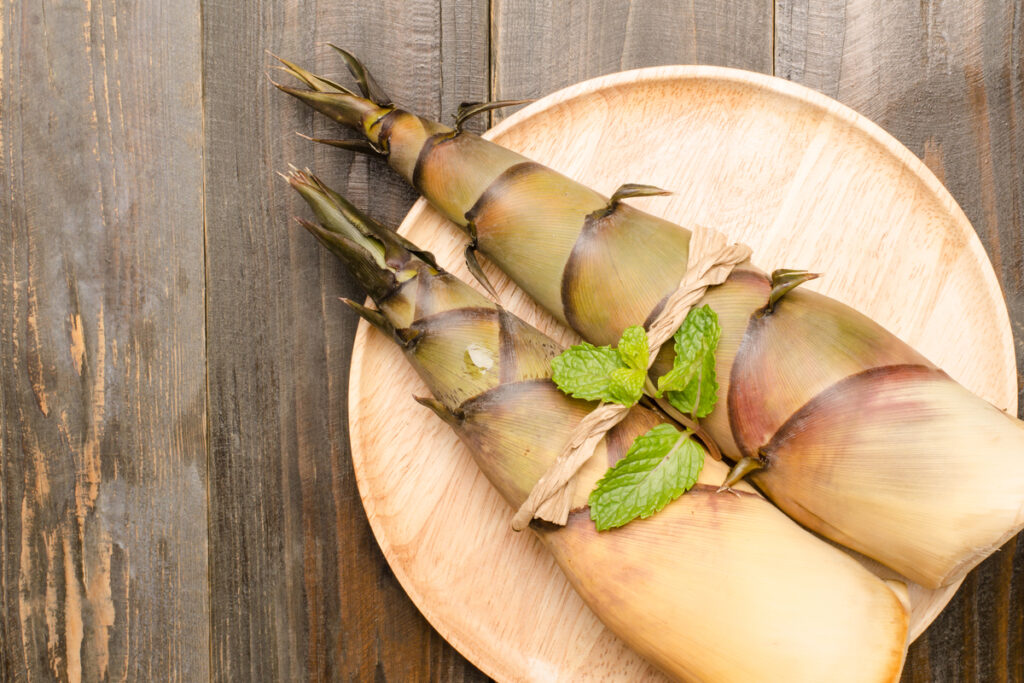
Many kinds of bamboo have edible shoots, though they must be cooked as raw ones are poisonous. they’re frequently fried up as part of several noodle dishes.
27. Baby Corn
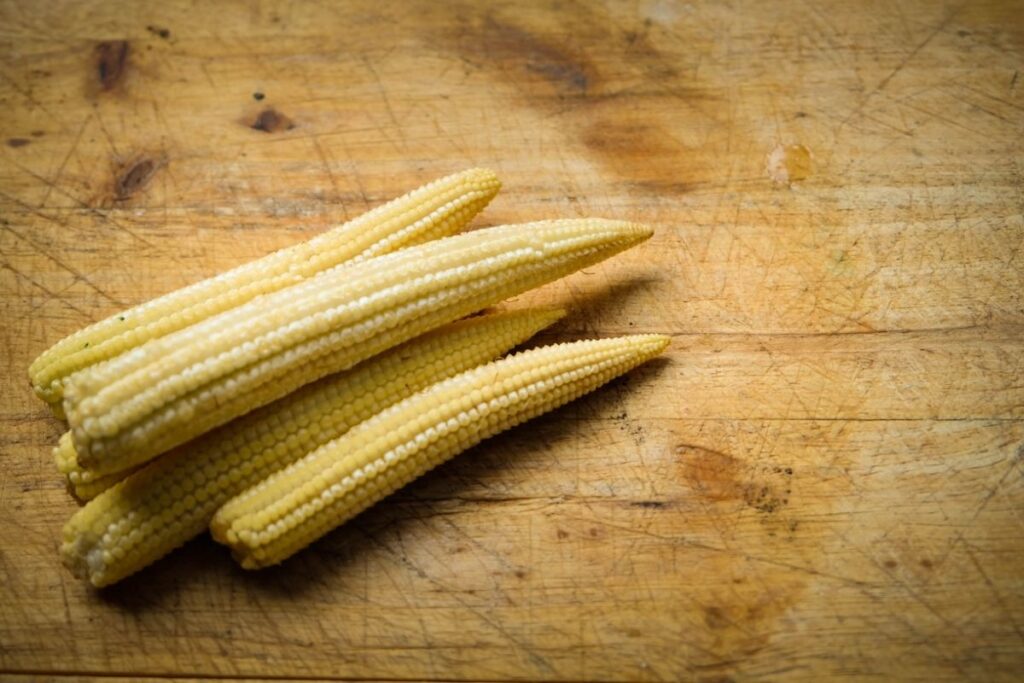
These small ears of corn aren’t fully grown yet, but they still taste good. Many Asian countries use them as part of dishes like curries, though they can also be stir-fried.
28. Green Papaya
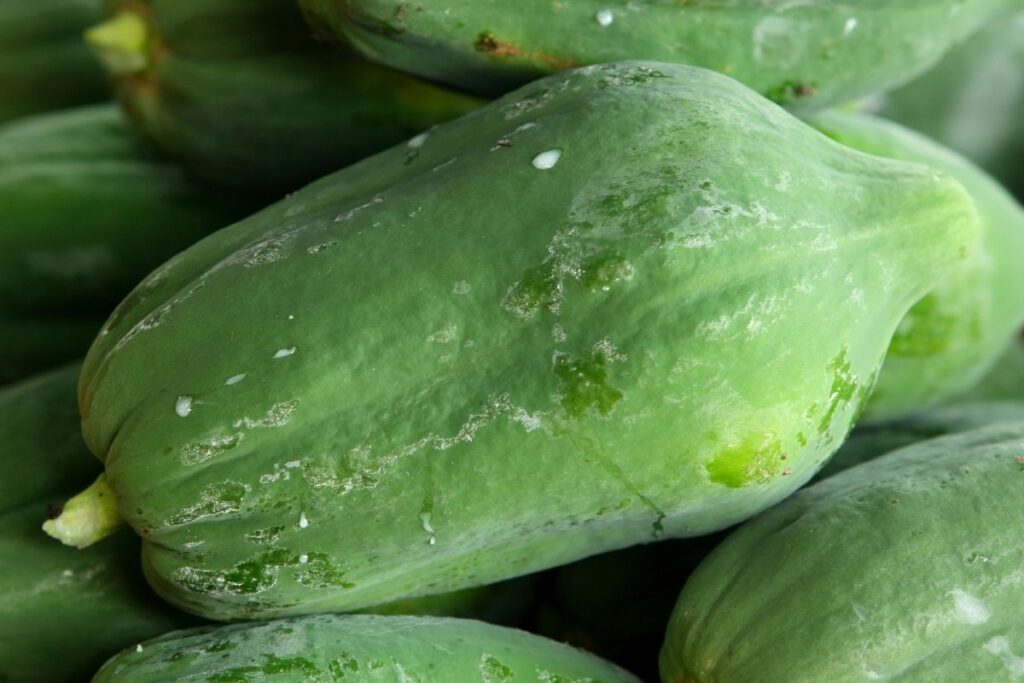
Papaya are technically fruit, but they’re used as a vegetable in their unripe, green form. They have a sharp flavor and a crunchy texture and are the star ingredient in Southeast Asian green papaya salads.
29. Scallions/Spring Onions
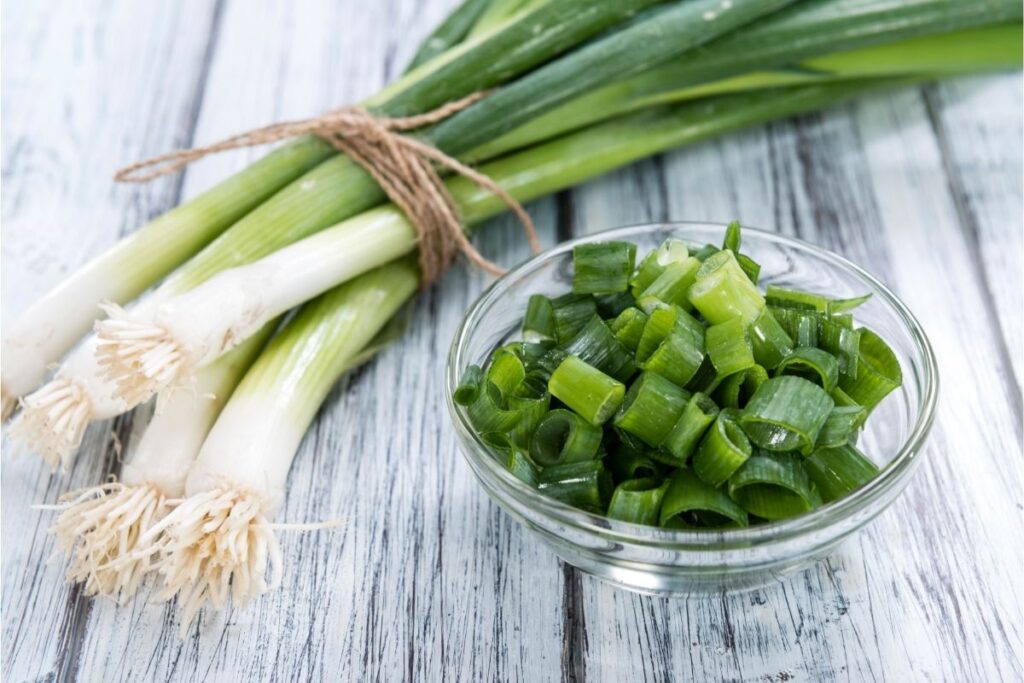
These aromatic vegetables are used in all kinds of ways in Asian cooking, including as an aromatic and as a garnish. They can be eaten cooked or raw.
30. Chinese Mustard Greens
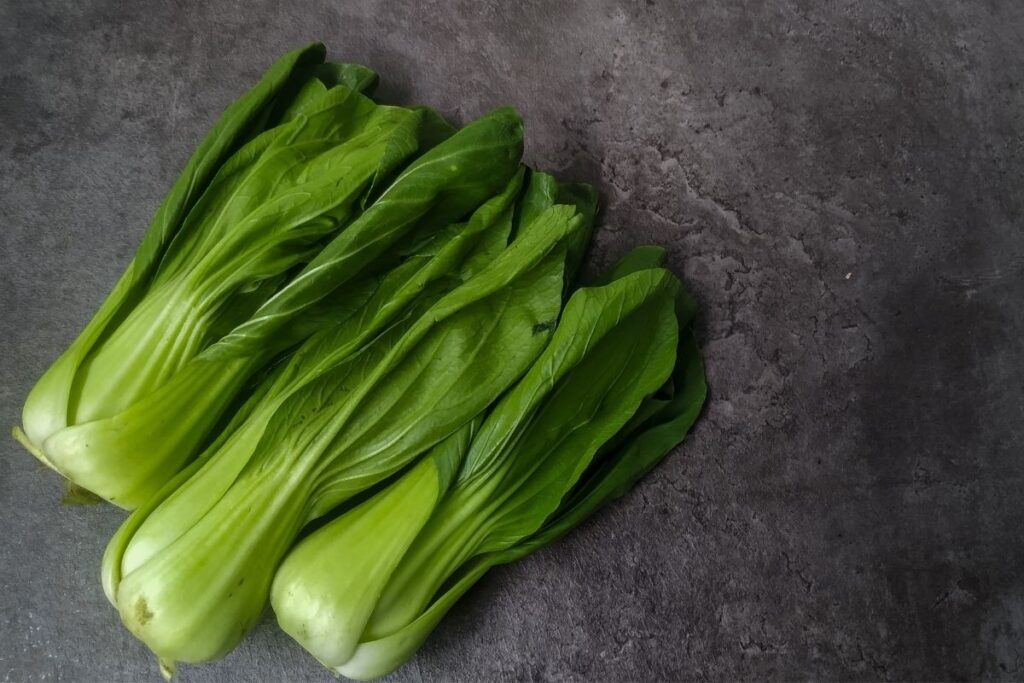
The leaves of a specific kind of Chinese mustard plant are used as vegetables in various Asian cuisines. They are also often pickled and then used as a seasoning.
31. Tatsoi
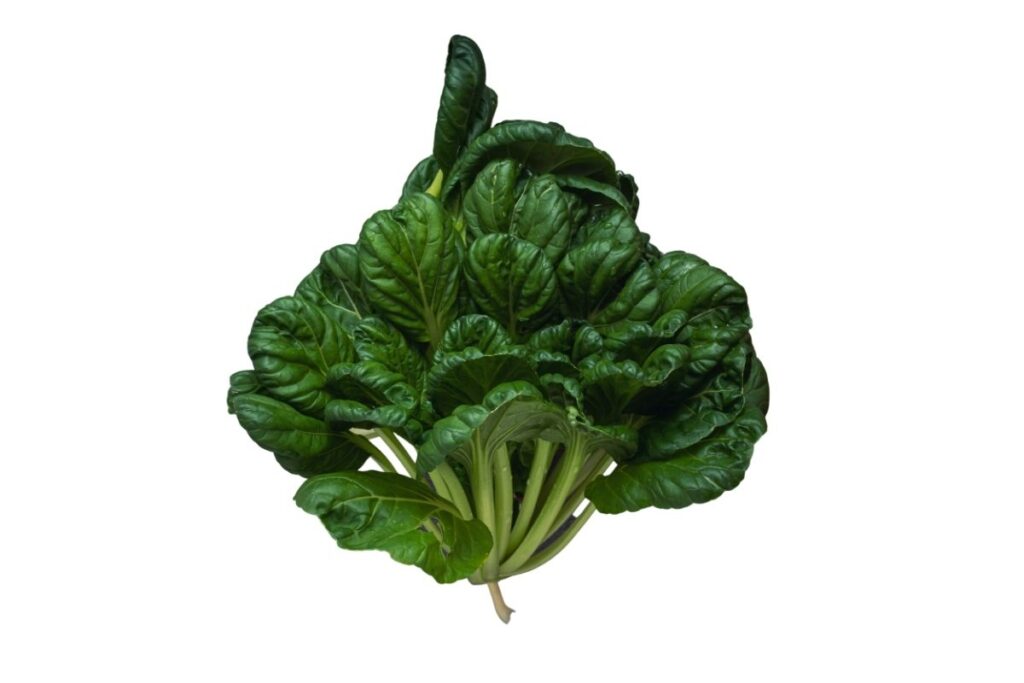
This is another kind of leafy green that tastes sweeter than most. The flavor is mild, and the texture is sweet, and it makes a good substitute for spinach.
32. Enoki Mushrooms
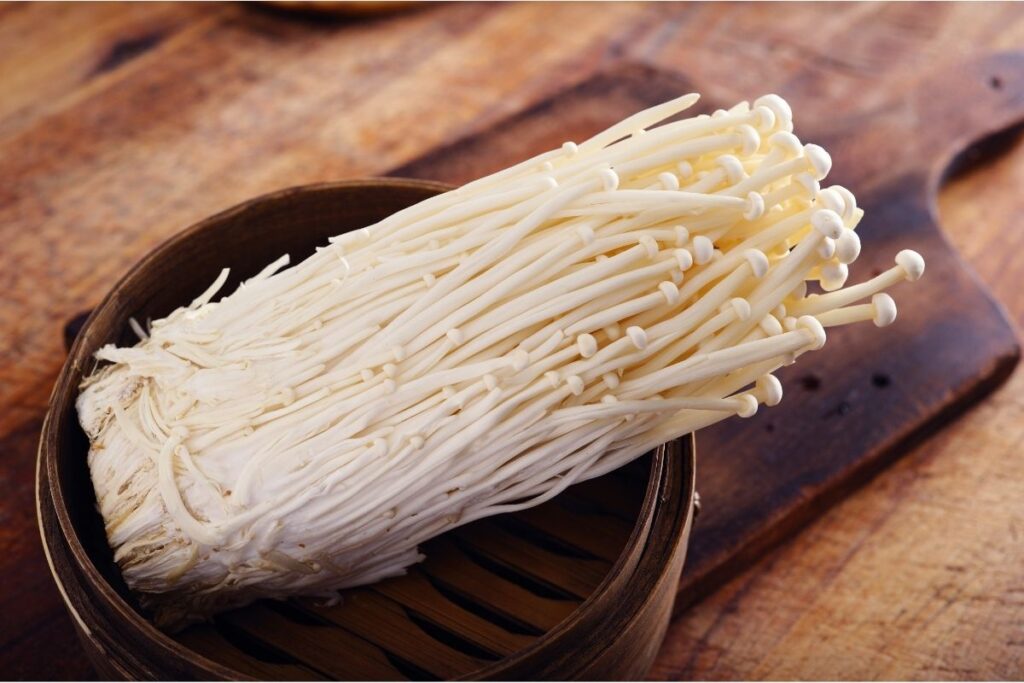
Another mushroom, and these are quite different to shiitake and oyster mushrooms. They’re much thinner, and are a popular ingredient in Chinese style hotpot. You’ll also see them a lot in Japanese soups.
RELATED: M Is For Mushrooms: Mighty Veggies That Start With ‘M’
33. Chinese Yam
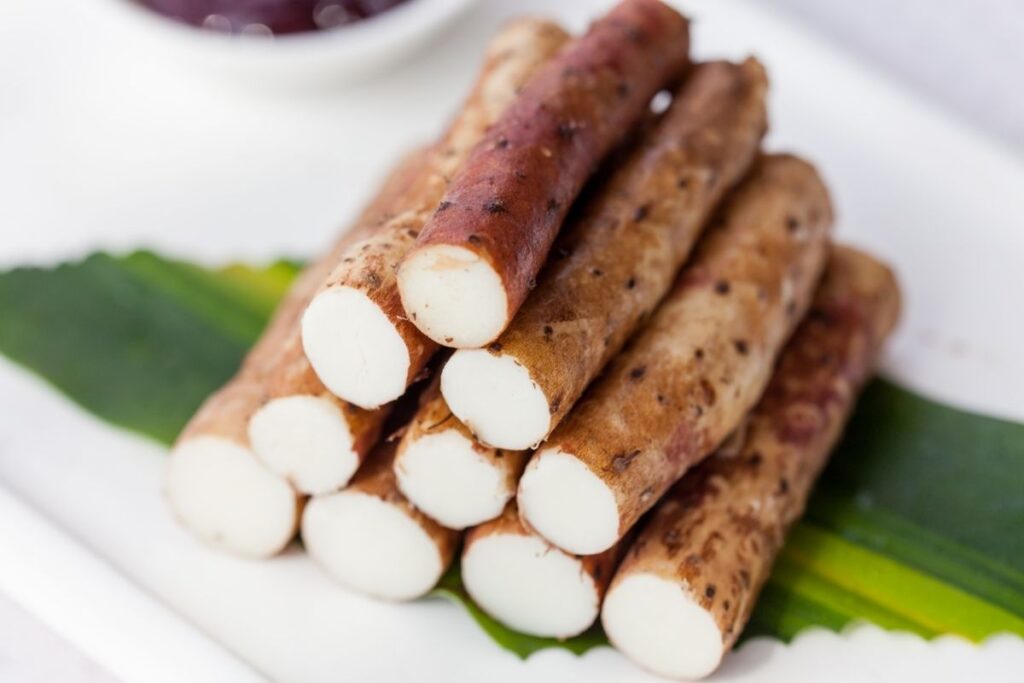
This vegetable is starchy and is often sliced up and added to dishes to add extra texture and flavor. It’s used all over East and Southeast Asia.
34. Konjac
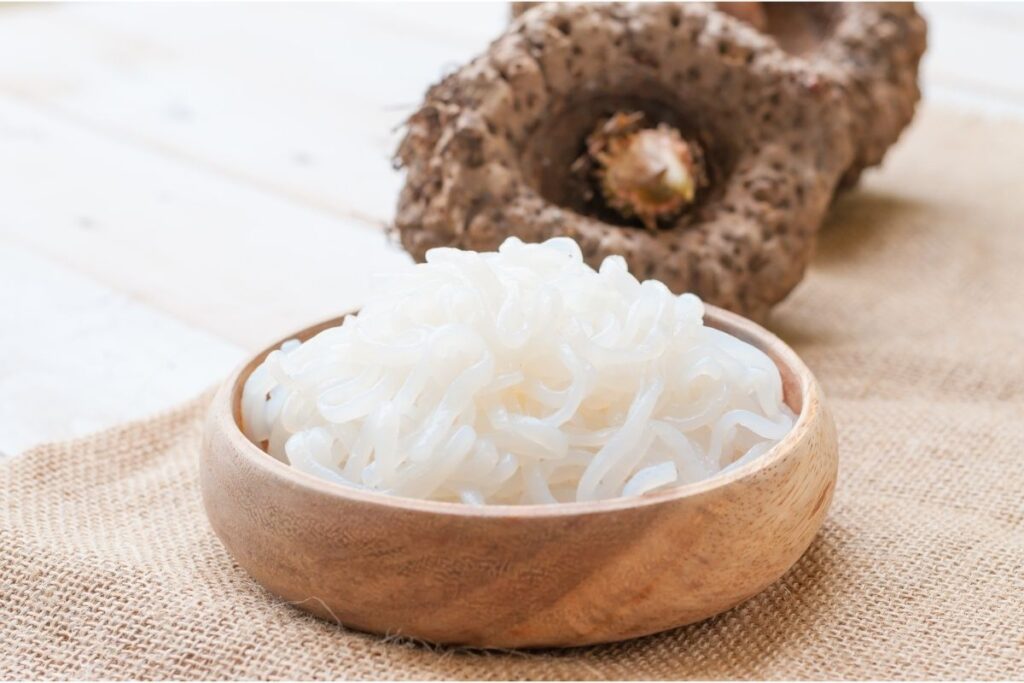
This is another tuber that’s very popular in both China and Japan. It’s typically used to thicken dishes and sauces.
35. Winged bean
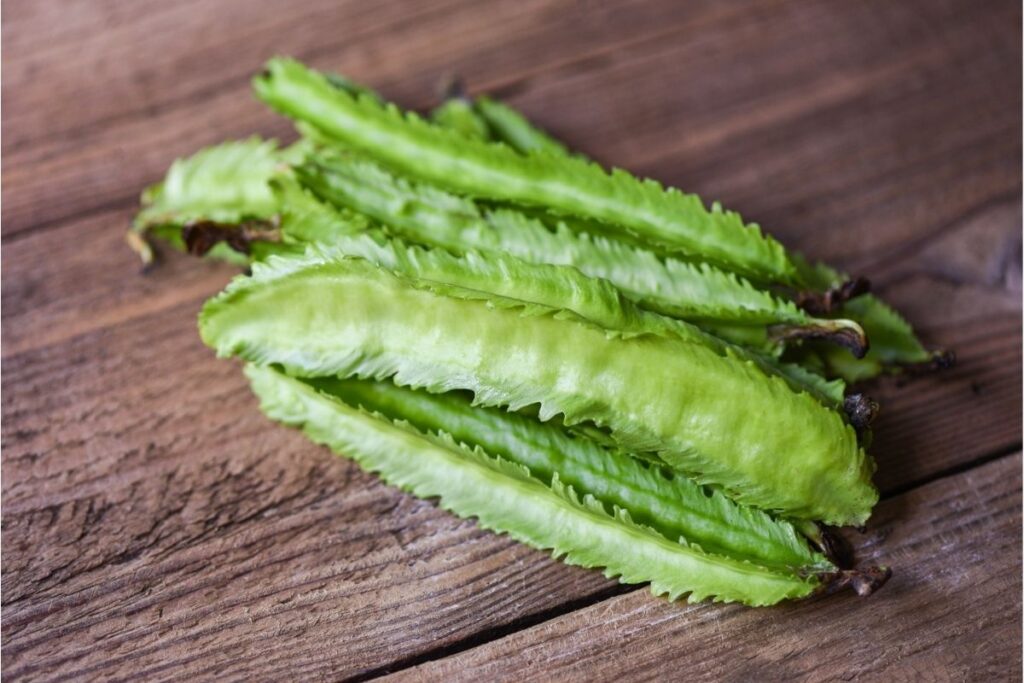
This bean is also sometimes called the princess bean or the goa bean and has quite an unusual appearance. They’re rich in nutrients and can be served in coconut milk or boiled as a snack.
36. Bottle Gourd
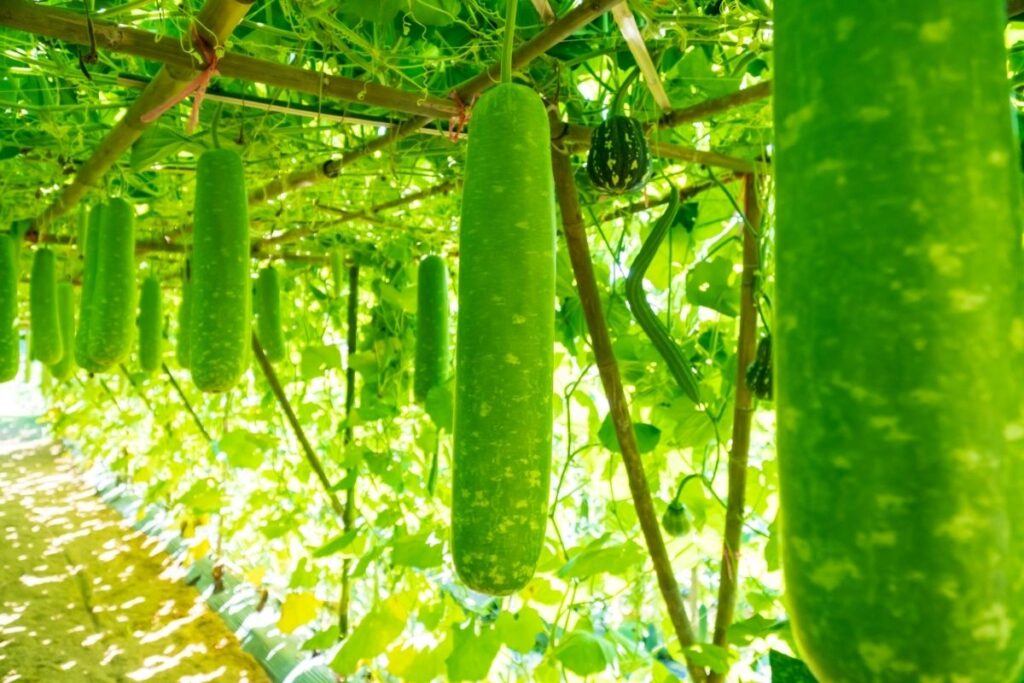
These large gourds with hourglass curves have a mild taste and are frequently served stir-fried or as part of a curry. If left on the vine, they grow larger and harder and can be hollowed out.
37. Mizuna Greens
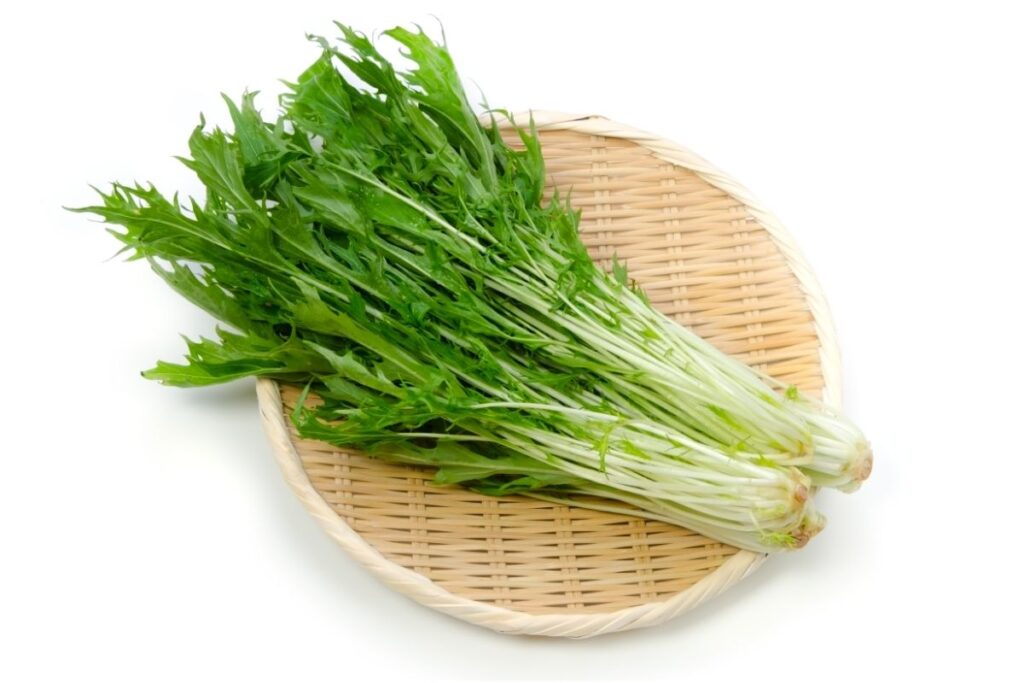
Also known as spider mustard, these greens have a strong, peppery taste. They’re extremely nutritious and are frequently eaten raw, though they can also be pickled or stir-fried.
38. Peppers
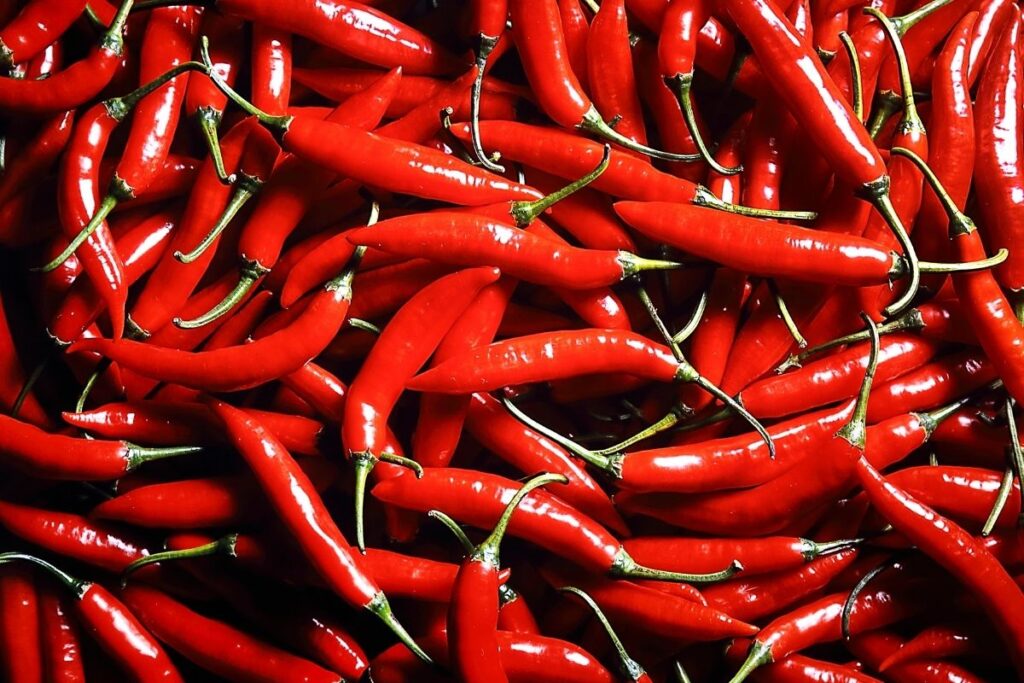
Peppers aren’t native to Asia but are now widely used in many Asian countries. This includes the non-spicy bell peppers all the way up to some of the very spiciest chilies, and many in between.
RELATED: What Is Eating My Pepper Plants? and How To Get Rid Of It For Good!
39. Garlic Chives
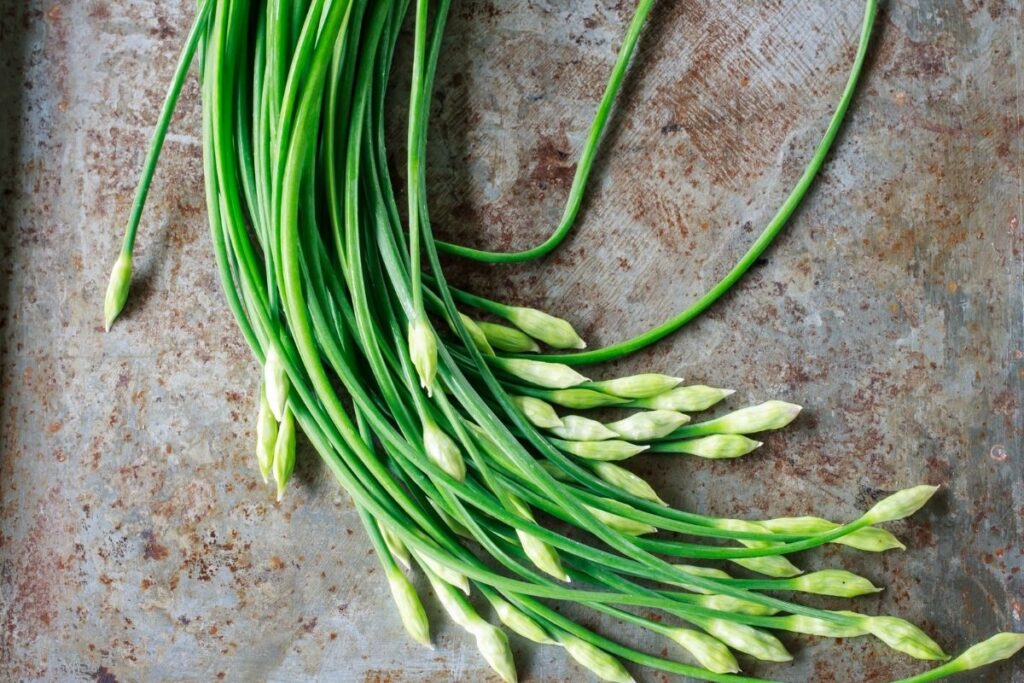
Native to China and widely used throughout Asia to give flavor to many kinds of dishes, similar to chives. For instance, you might see them in Chinese pork dumplings.
40. Leeks
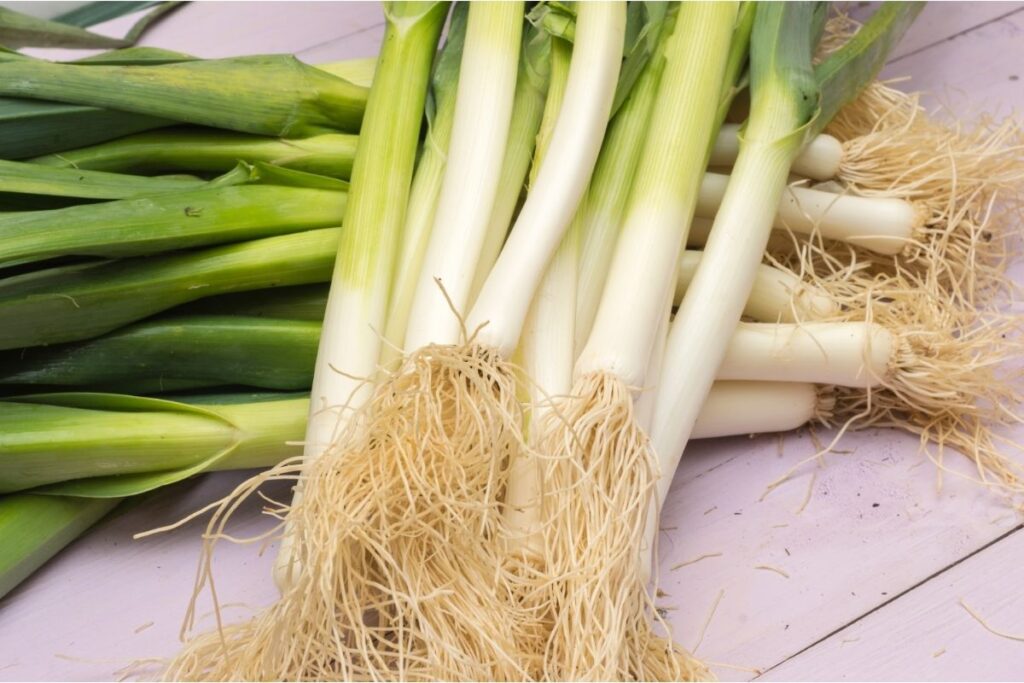
While they’re used all over the world, they originated in Asia and are still used there in soups, stir-fries, and roasts. Their flavor is a bit milder than those of shallots or spring onions.
Final Thoughts
There you have it, a list of 40 different Asian vegetables. This covers most of the Asian vegetables that you’re likely to come across, although there are of course others that we haven’t mentioned here.
Many of these are fairly easy to buy even outside of Asia, particularly if you look in Asian grocery stores and online, although a few are very obscure in the West.
Either way, there are all kinds of culinary possibilities when it comes to these vegetables, so why not try out a few yourself and see what you end up with!







